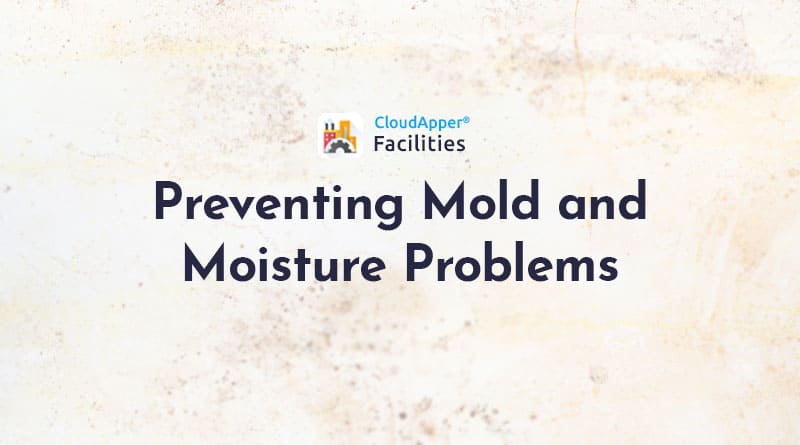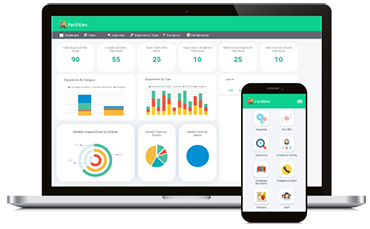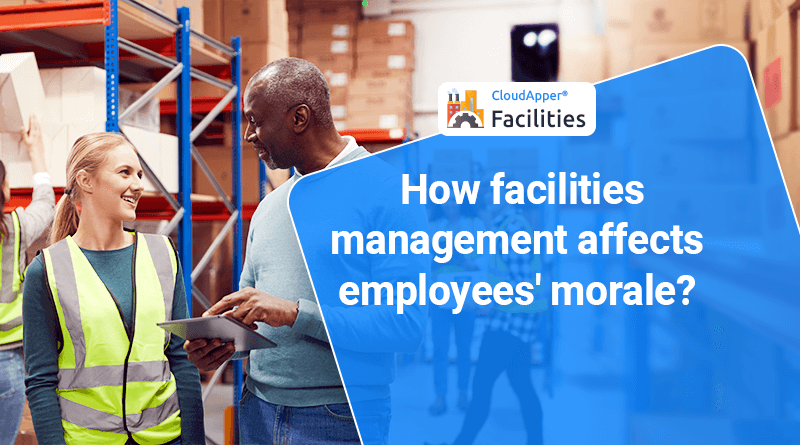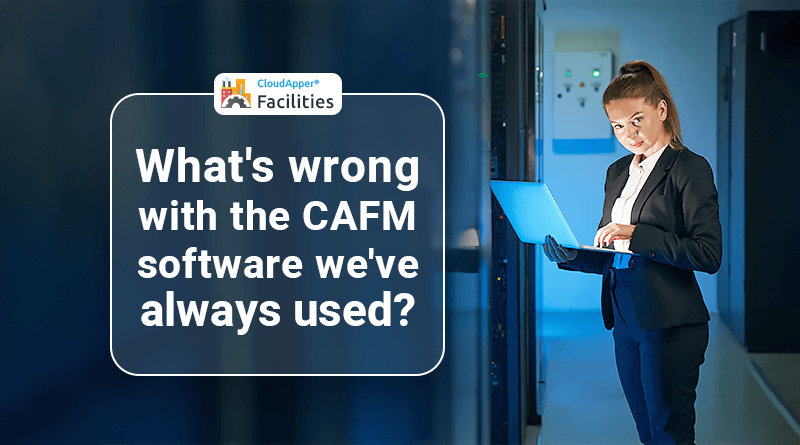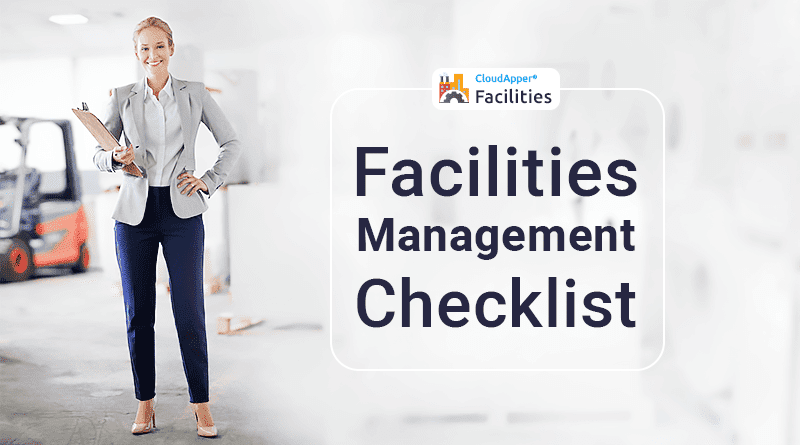Table of Contents
As a result of the COVID-19 pandemic, many facilities have been temporarily under a lockdown or operating at a reduced capacity. This prolonged period of inactivity can lead to the development of mold problems that spread around the entire facility, making the environment harmful for its residents. During this extended period of unoccupancy, a facility is most susceptible to mold and moisture problems and causes serious health hazards, especially if proper maintenance has not been carried out on a regular interval.
What Are Mold and Moisture Problems?
From water-intrusion issues to problematic moisture build-ups and lack of ventilation, mold problems are the riskiest to human health when not removed or spotted. The ideal solution to treating mold is to take preventive measures, and for that, a facility manager should be able to identify areas that are likely to get infected most.
Mold problems often develop due to climbing humidity levels (greater than 65%), or due to a lack of a proper ventilation system. It can also develop under certain conditions within a property, such as keeping furniture and cardboard close to the wall, changing seasons, and weather patterns.
What Can You Do If You’re Concerned About Mold Growing In Your Facility?
The best option is to go for the prevention route- before it becomes a problem, start moisture control. Also, make sure the first person who notices any sign within the facilities reports it to the facility manager. If the problem is already there, hire an expert in remediation who can perform the required facility maintenance to help return your facility to its natural state.
Mold problems are not only difficult but can also be costly to fix. That’s why trying to prevent mold by ensuring proper facility maintenance is necessary, even when a building is under the complete shutdown.
Preventing and Minimizing Mold Risk at Your Facility
Mold can grow on almost any surface: on the carpet, clothing, food, paper, and even in places out of your site, such as the backside of furniture, areas inside walls around leaking or condensing pipes, and above ceiling tiles. That’s why it’s important to detect them early and do the necessary maintenance to stop their spread.
Early detection and taking preventive measures against mold is an essential task for facility managers. Here are four steps that should be part of an assessment before allowing your workforce to enter the facility:
1. Control Humidity
Mold risks grow within a property if the humidity level fluctuates frequently or exceeds 60%. Facility managers will need to monitor and evaluate the indoor humidity level regularly with proper equipment to accurately anticipate the likelihood of mold contamination. A digital hygrometer can be used to get accurate readings of humidity levels, which can be an indicator of the risk of mold.
Conducting mold inspections, whenever any spikes in humidity readings are noticed, should be a part of a facility maintenance strategy, regardless of any occupants. If the weather conditions are favorable for mold growth, they can spread across your entire facility within a matter of days, which is why regular assessments are essential.
2. Develop Risk Assessment Strategies
Unoccupied or empty facilities should be inspected regularly for mold risks. Look out for mold growths and other signs of risk, such as dampness, smells, or other indicators of moisture. Make this a part of your preventive maintenance strategy to ensure regular inspection. As a facility manager, identifying mold or other health hazards in a facility should be a top priority.
3. Investigate Water Leakage and Signs of Dampness
Similar to poor air quality, mold growth multiplies when conditions are favorable. Water leakage and plumbing failure can often result in hazardous and risky conditions. That’s because these conditions develop moisture that helps mold breed, especially in areas impacted by water damage and build-up.
Basically, areas that attract moisture are breeding grounds for mold activity, even if they are not visibly accessible. Mold can grow around pipes, inside walls, and even window frames. If moisture levels rise, then there might be an escalation of this risk. In situations like this, a consultation with a restoration specialist might help recover a building from infestation.
4. Check Ventilation Systems Before Activation
Air circulation systems that have been unused for prolonged periods can cause the development of mold problems, especially if fungal growths are masked behind vents. Whether a building is shut down or running at a reduced capacity, ventilation/HVAC systems may not be used in their entirety. This can be a favorable condition for surface infestation or other unhygienic activity to take place. This is particularly risky after a period of inactivity, because used ventilation systems, upon activation, will help spread toxic or harmful mold spores throughout the facility.
That’s why before activating a ventilation system that has been inactive for a while, it should be inspected for hidden mold growth throughout the building. Taking care of mold before activating it is key for future prevention and establishing a clean facility with healthy air quality for its occupants.
Understanding the Risk
Mold risk can be determined by its symptoms, either as asset damage or for its negative effects on human health. Mold normally develops visibly as a cluster of spores, which takes shape on interior surfaces. Mold looks awful and can be easily identified by its musty or damp smell.
Mold is considered a serious health and safety hazard which can develop on interior surfaces within a building, including tiles, carpets, wallpapers, and other fabrics. According to the Center for Disease Control (CDC), mold is “toxigenic” and can cause several health issues including throat irritation, nasal stuffiness, eye irritation, cough, and wheezing, as well as skin irritation in some cases.
With CloudApper Facilities App, Facility Managers can schedule and conduct regular mold inspections and many other facility maintenance tasks to watch out for security risks and hazards in order to prevent them from endangering their assets and workforce. It solves the basic problem by first knowing how to identify risks and then treating them in a timely manner to prevent risks in the future.
What is CloudApper AI Platform?
CloudApper AI is an advanced platform that enables organizations to integrate AI into their existing enterprise systems effortlessly, without the need for technical expertise, costly development, or upgrading the underlying infrastructure. By transforming legacy systems into AI-capable solutions, CloudApper allows companies to harness the power of Generative AI quickly and efficiently. This approach has been successfully implemented with leading systems like UKG, Workday, Oracle, Paradox, Amazon AWS Bedrock and can be applied across various industries, helping businesses enhance productivity, automate processes, and gain deeper insights without the usual complexities. With CloudApper AI, you can start experiencing the transformative benefits of AI today. Learn More
